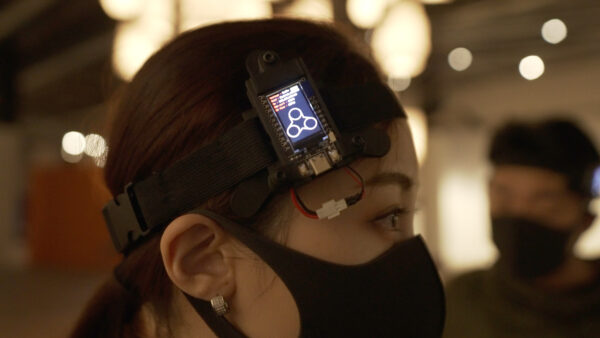During our work in the frame of the EightOS project, we developed motion tracking sensors that can be used to provide live feedback to dancers and introduce more variability into their movement. In November 2021, we presented this work at the IMPACT platform at Theatre de Liege in Belgium. They provided us with a grant to develop this project further.
Variability is an important aspect of EightOS practice because it makes movement and interaction more adaptive and responsive to external impulses. We practice a special type of variability, which is fractal — or self-similar — at its core: the type of changes that can be found on a small-scale and replicated on big scale and vice versa. This makes movement look very organic: small deviations in speed / intensity / amplitude are followed by occasional big shifts in dynamics.
In order to make this vision reality, we developed motion-tracking sensors that operate on the basis of OSC protocol and communicate with each other and the base station via wi-fi. These sensors have an accelerometer, a gyroscope, haptic feedback, as well as displays, which can be used to communicate the dynamics to the dancer in real time. There are 4 available states and each of those states represents a certain type of dynamics: repetitive, regular, fractal, and complex. The dancer can then choose which state or succession of states they prefer to integrate into their movement and use the feedback from the sensor accordingly.

Our experience is that this technology produces surprising movement and group dynamics. The figure of a choreographer is delegated to an external device, which simply acts as a feedback mechanism. There is no single prescribed way to respond to this feedback, every dancer can interpret it in their own way. It will, however, affect their movement. Sometimes this feedback may disrupt the movement pattern, so it is not necessarily helpful to the dancer. Rather, the design of this tool is to propose one to break their pattern by constantly shifting dynamics of how they move.
The sensors also have OSC protocol built in, which communicates the states via IP. This data can be used to create a unique soundscape, which will then, in turn, influence the movement of the dancer.
…
The project is developed in collaboration between Thomas Julien (hardware, design) and Kirikoo Des / NSDOS (hardware, concept, design, sound) and Dmitry Paranyushkin (concept, fractal feedback control algorithm).
More information on the technical aspects of this projects: EightOS: Fractal Movement Control.
Event page: Theatre de Liege website.
